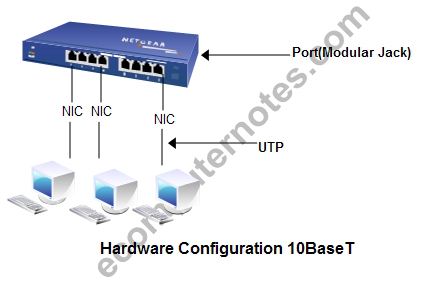A pair of wires twisted together form a twisted pair. They have more noise immunity than the two-wire open lines. Each wire is insulated and has thickness in the order of 0.016 inches to 0.015 inches.
One wire in the pair carries the signal and the other carries the ground. The electrical interference is minimum in the twisted pair when compared with the two-wire open lines. If multiple twisted pairs are enclosed in a same cable, then a great reduction in cross-talk is achieved.
Recently twisted pair has become very popular as a LAN medium. Although its performance characteristics are less appealing, its low cost and high availability certainly are attractive. Unshielded Twisted-Pair (UTP) performs nicely at low data rates using the same cable for LANs as is used for telephone terminals, hence the current tendency to deploy Category 5 UTP pairs to each jack so that voice and data terminals can share a common wiring system. Additionally, UTP has been proved to perform at very high data rates (100 Mbps) over short distances.

Shielded twisted-pair (STP) sometimes is used in LAN applications. STP might be used in an· environment in which UTP data transmission might be especially susceptible to EMI/RFI, or might cause interference on adjacent pairs.
Implementations of different LANs using UTP Cables are explained below.
10BASET (Twisted Pair Ethernet)
10BaseT translates to 10Mbps, Baseband, Twisted pair. 10BaseT actually is a wire hub that serves as a multiport repeater, as well as a central point of interconnection. The hardware configuration of 10BaseT. A star type topology is used. The device shown at the center is known as hub. A connector known as RJ45 is connected at each end of the cable. The hub has multiple ports, each of which is connected to node using NIC via the UTP cable. Each of the NIC for the 10BaseT has a built-in transceiver as do those of the 10Base2. The maximum distance between the 10BaseT hub and the attached device is 100meters/segment.

 Dinesh Thakur holds an B.C.A, MCDBA, MCSD certifications. Dinesh authors the hugely popular
Dinesh Thakur holds an B.C.A, MCDBA, MCSD certifications. Dinesh authors the hugely popular